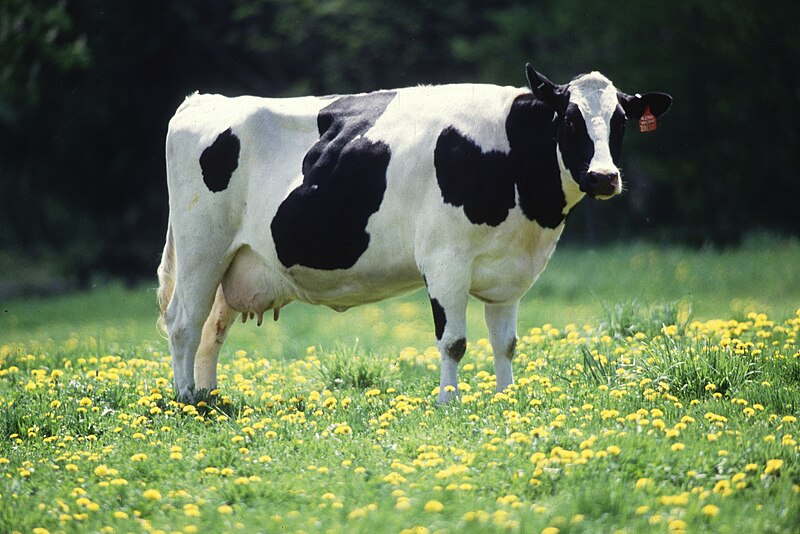Setshwantsho:Cow female black white.jpg

Selekanyo sa tshedimoso ye: 800 × 534 pixels. Tse dingwe resolutions: 320 × 214 pixels | 640 × 427 pixels | 1,024 × 684 pixels | 1,280 × 855 pixels | 2,700 × 1,803 pixels.
Faele ya konokono (2,700 × 1,803 pixels, file size: 887 KB, MIME type: image/jpeg)
Segologolo sa setshwantsho
Tbetsa letsatsi/nako go bone faele jaaka ene e ntse ka nako eo.
| Letsatsi/Nako | Thumbnail | Dikarolwana | Modirisi | Comment | |
|---|---|---|---|---|---|
| ya jaanong | 05:31, 29 Phatwe 2023 |  | 2,700 × 1,803 (887 KB) | ReichLover1997 | Reverted to version as of 21:09, 24 May 2006 (UTC) |
| 02:42, 1 Lwetse 2018 |  | 2,190 × 1,680 (725 KB) | Hohum | Cropped, colour adjust | |
| 23:09, 24 Motsheganong 2006 |  | 2,700 × 1,803 (887 KB) | Siebrand | {{Information| |Description= {{nl|Een koe}} {{en|Because much of the cost of a cow is the feed and labor needed to maintain her, fewer but higher yielding cows mean lower priced milk. Dairy herd improvement ultimately benefits consumers. That's why it's j |
Tiriso ya setshwantsho
There are no pages that use this file.
Tiriso ya file ka karetso
Di wiki tse dingwe di dirisa setshwantsho se
- Dirisa mo ace.wikipedia.org
- Dirisa mo ang.wikipedia.org
- Dirisa mo an.wikipedia.org
- Dirisa mo ar.wikipedia.org
- Dirisa mo ast.wikipedia.org
- Dirisa mo ast.wiktionary.org
- Dirisa mo az.wikipedia.org
- Dirisa mo az.wiktionary.org
- Dirisa mo ba.wikibooks.org
- Dirisa mo be.wikipedia.org
- Dirisa mo bg.wikipedia.org
- Dirisa mo bjn.wikipedia.org
- Dirisa mo bn.wikipedia.org
- Dirisa mo bn.wikibooks.org
- Dirisa mo bs.wiktionary.org
- Dirisa mo ca.wikipedia.org
- Dirisa mo ca.wikibooks.org
- Dirisa mo ca.wikiquote.org
- Dirisa mo ca.wiktionary.org
- Dirisa mo ceb.wikipedia.org
- Dirisa mo chr.wikipedia.org
- Dirisa mo ckb.wikipedia.org
- Dirisa mo csb.wiktionary.org
- Dirisa mo cy.wikipedia.org
- Dirisa mo dag.wikipedia.org
- Dirisa mo da.wikipedia.org
- Dirisa mo da.wiktionary.org
- Dirisa mo de.wikipedia.org
- Dirisa mo de.wiktionary.org
View more global usage of this file.
